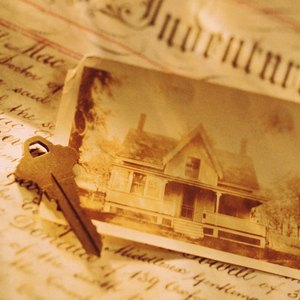
If you own a home with your spouse or another person, and that person passes away, you must remove the name of the deceased from the house deed to prevent possible legal and financial issues later on. Though the process varies from state to state, you typically must prove that the person has died and file for a new house deed.
Obtain the deceased person's death certificate. After the funeral for the deceased, the funeral home typically gives the family the certificate of death. If you did not receive this certificate from the funeral home, contact your county's vital records office and apply for the certificate. The certificate typically costs a few dollars.
Ask for an Affidavit of Death of Joint Tenant form from your county court house. The affidavit form is the official document that your county records office uses to identify changes to your house deed.
Fill out the affidavit form with your name, Social Security number, contact information, the specific information about the property, the name of the deceased and the date of death. Do not sign the document yet.
Locate a notary in your area and ask her to notarize the affidavit. Many states require notarized signatures on deed changes to prevent legal disputes in the future. Your county clerk most likely has an in-house notary. Take photo identification with you to the notary and sign the documents. Notaries typically charge a few dollars for their services.
Take the notarized affidavit and death certificate to your county records office. The records office will review the documents and verify that the deceased person is actually dead. After this process, the office will issue a new deed for the property. Depending on your county, the process might take a few weeks to complete.
References
Writer Bio
Aaron Marquis is a University of Texas graduate with experience writing commercials and press releases for national advertising agencies as well as comedy television treatments/stories for FOX Studios and HBO. Marquis has been writing for over six years.

